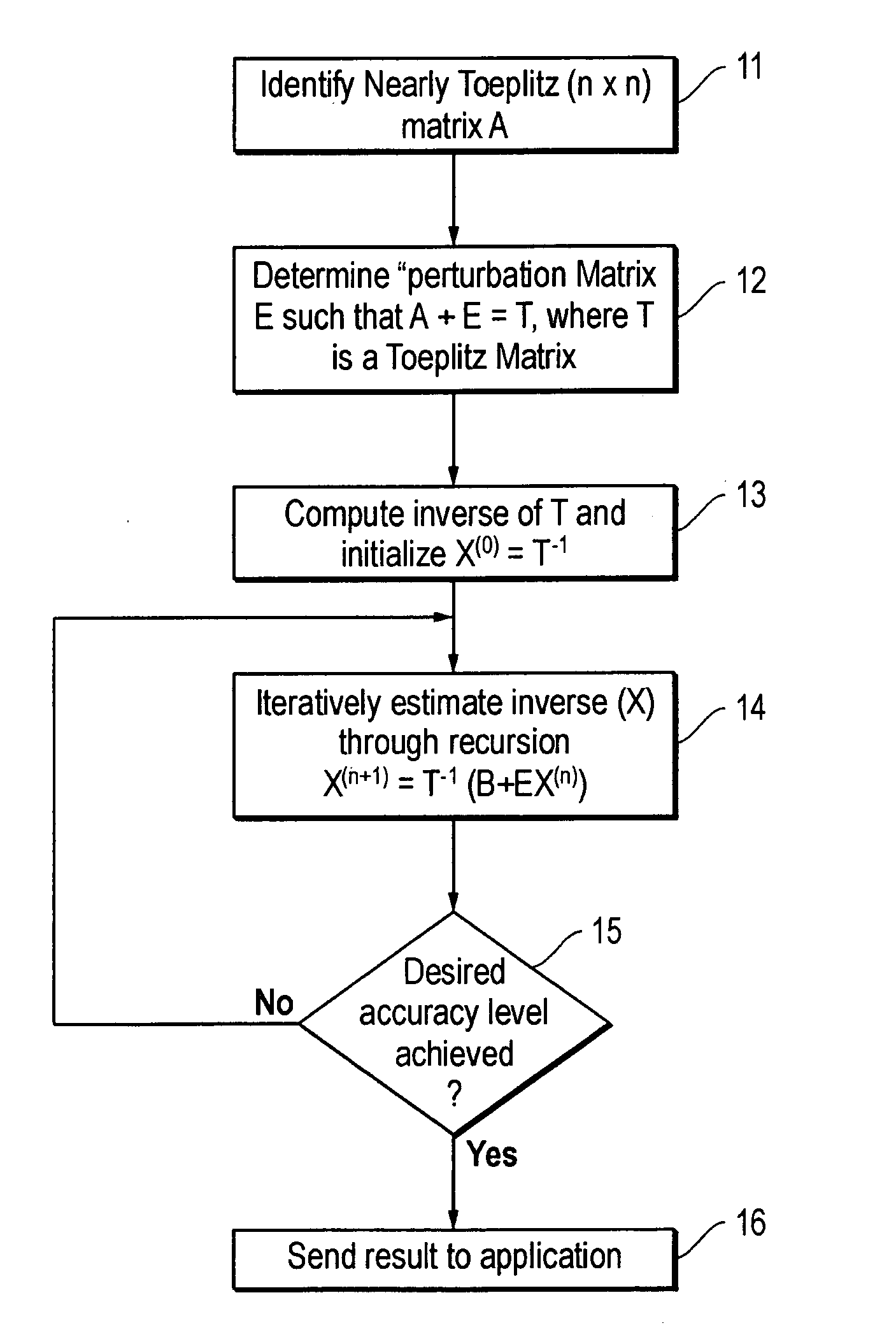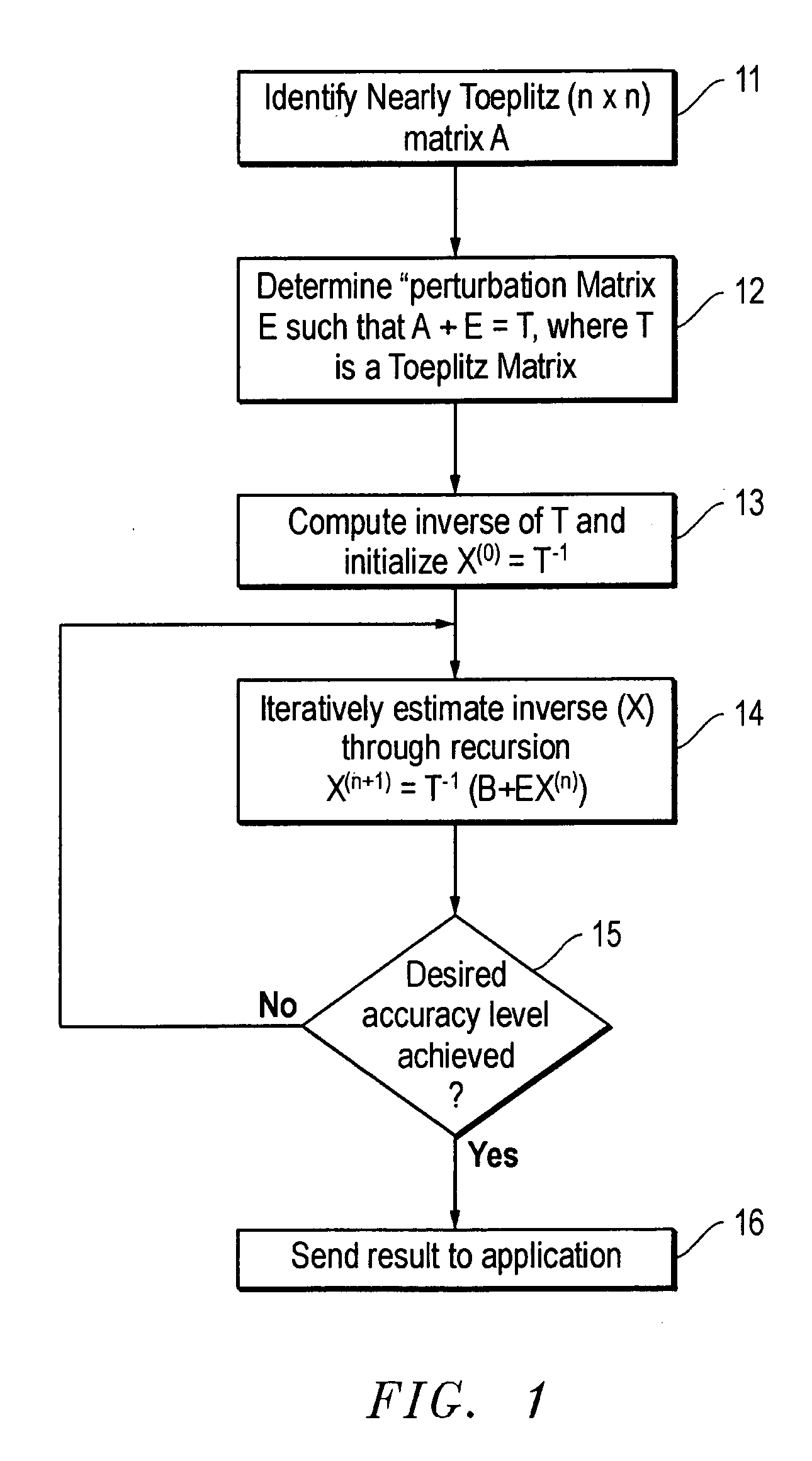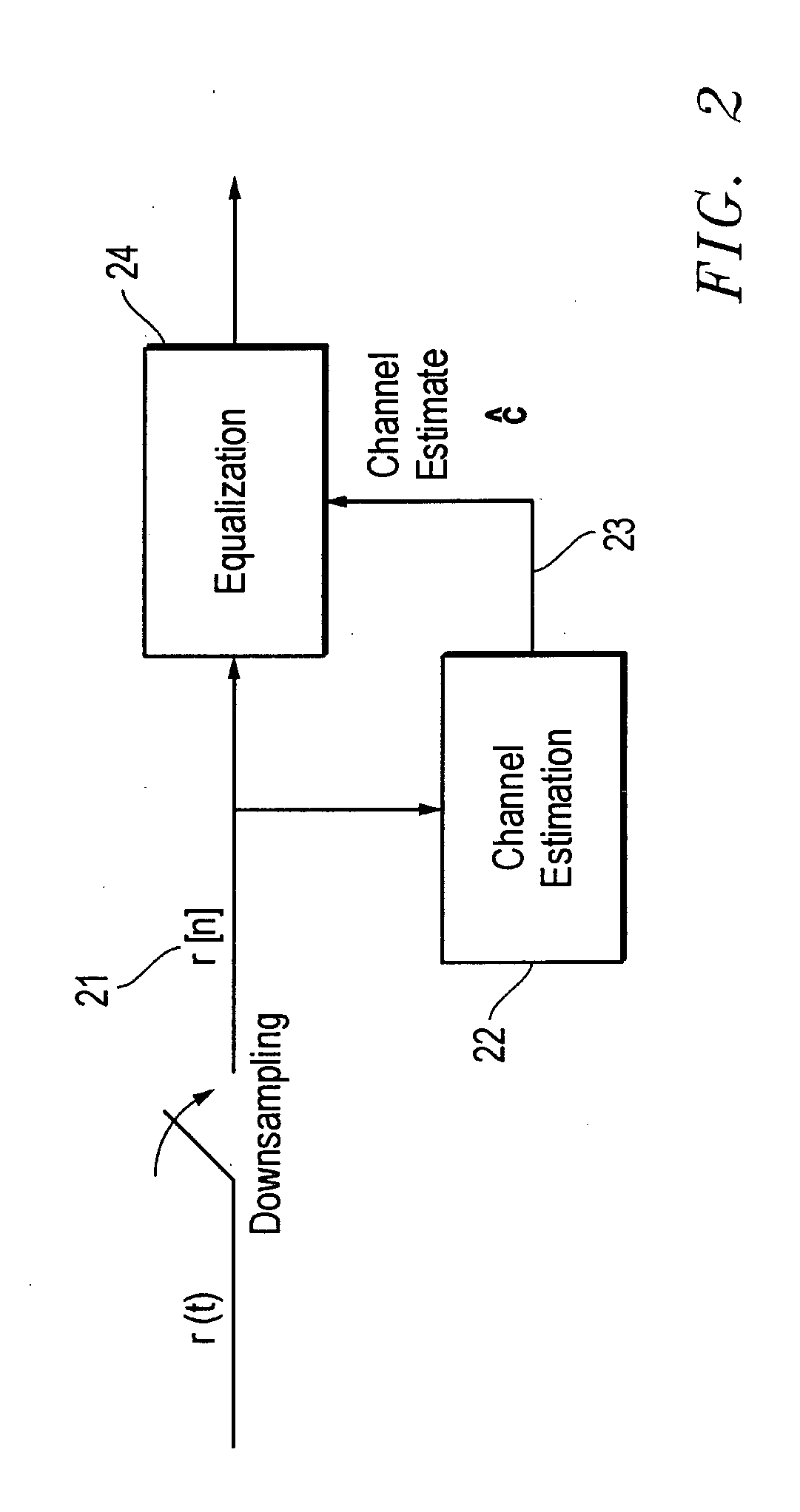Method of inverting nearly Toeplitz or block Toeplitz matrices
a technology of nearly toeplitz and matrices, applied in the field of radio telecommunication networks, can solve the problems of intersymbol interference (isi) at the receiver, multipath fading, and difficult reliable transmission in a wireless communication system, and achieve the effect of simple and effectiv
- Summary
- Abstract
- Description
- Claims
- Application Information
AI Technical Summary
Benefits of technology
Problems solved by technology
Method used
Image
Examples
Embodiment Construction
[0016] This disclosure describes an iterative algorithm for inverting nearly Toeplitz matrices that can be utilized, for example, in many areas of baseband receiver algorithms. In summary, the invention addresses the problem of solving
AX=B (1)
where A is an n by n invertible, nearly Toeplitz (or block Toeplitz) matrix, B is a vector or matrix of dimension n by m, and X is the desired inverse or solution of dimensions n by m.
[0017]FIG. 1 is a flow chart illustrating the steps of an exemplary embodiment of the method of the present invention. The method starts at step 11 by identifying a nearly Toeplitz (or block Toeplitz) n by n matrix A. At step 12, a “perturbation” matrix E is determined such that A+E=T, where T is a Toeplitz (or block Toeplitz) matrix. At step 13, the inverse matrix of T is computed using known efficient algorithms for inverting Toeplitz or block Toeplitz matrix. If A is nearly Toeplitz or block Toeplitz, then E is “small” in some sense (for example, its L2 no...
PUM
 Login to View More
Login to View More Abstract
Description
Claims
Application Information
 Login to View More
Login to View More - R&D
- Intellectual Property
- Life Sciences
- Materials
- Tech Scout
- Unparalleled Data Quality
- Higher Quality Content
- 60% Fewer Hallucinations
Browse by: Latest US Patents, China's latest patents, Technical Efficacy Thesaurus, Application Domain, Technology Topic, Popular Technical Reports.
© 2025 PatSnap. All rights reserved.Legal|Privacy policy|Modern Slavery Act Transparency Statement|Sitemap|About US| Contact US: help@patsnap.com



